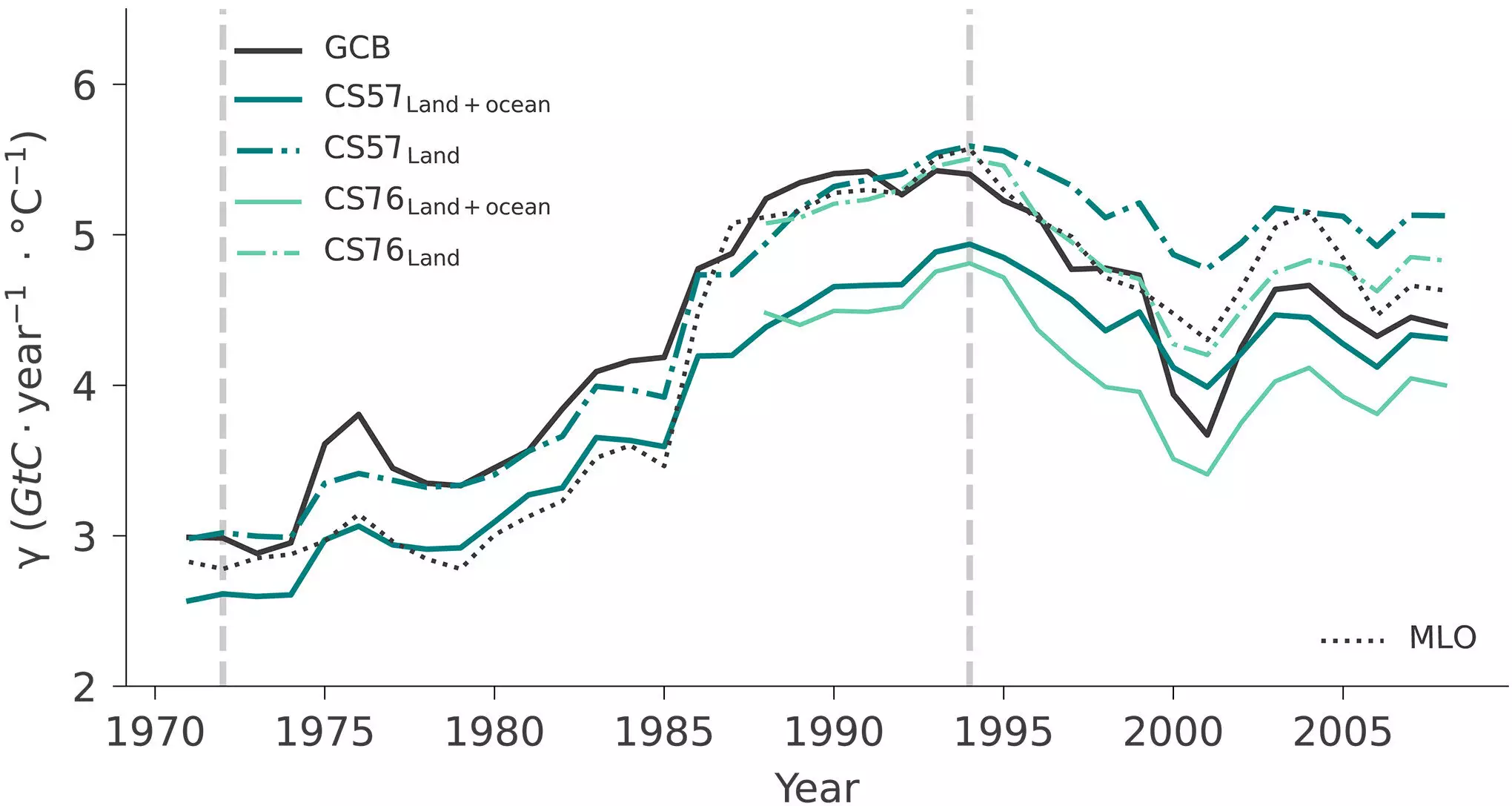Recent research from the Max Planck Institute for Biogeochemistry, in collaboration with Leipzig University, sheds new light on the age-old connection between atmospheric carbon dioxide (CO₂) levels and tropical temperatures. The study, published in the journal Science Advances, presents a significant departure from existing theories that link increased CO₂ sensitivity to climate change’s long-term effects. Instead, it posits that the spiking concentration of CO₂ in the atmosphere could be attributed predominantly to a few particularly powerful El Niño events occurring between 1980 and 1998.
Traditionally, scientists have assumed that the relationship between atmospheric CO₂ and temperatures in tropical regions reflects broader climate change processes. However, the recent findings indicate that the fluctuating climate in the tropics has been exacerbated by specific extreme weather events rather than consistent long-term shifts. This reevaluation not only underscores the complexities inherent in climate systems but also raises questions about the assumptions we’ve made regarding carbon dynamics in response to rising global temperatures.
Global ecosystems, particularly those found on land, serve as significant sinks, absorbing approximately one-third of human-related CO₂ emissions. These natural processes act as a counterbalance to climate change, absorbing carbon that would otherwise exacerbate the greenhouse effect. Yet, in the latter half of the 20th century, scientists noted a troubling increase in fluctuations concerning global carbon absorption. The expectation was that rising temperatures in tropical regions would lead to a more pronounced, systematic increase in atmospheric CO₂ levels, signaling alarming changes in the carbon cycle itself.
The recent findings challenge this narrative by suggesting that the observed “doubling” of CO₂ sensitivity to warming in the tropics is linked to the increasing frequency of El Niño events, particularly the devastating episodes of 1982-83 and 1997-98. The occurrence of these events leads to severe droughts and heat stresses, which, in turn, stifle plant growth and reduce ecosystems’ ability to sequester carbon. This could explain why, during these extreme circumstances, vegetation not only fails to absorb CO₂ but actively releases stored carbon back to the atmosphere.
The findings from the Max Planck study highlight a fundamental understanding of what is known as the “slow-in, fast-out” dynamics within the carbon cycle. Under typical conditions, carbon is gradually absorbed by trees and soil; however, during extreme weather events like powerful El Niños, this process can be reversed almost instantaneously. The rapid release of carbon under these conditions can mislead researchers into believing that systematic changes within the carbon cycle are taking place due to climate change, when in fact, these shifts may stem from natural climate variability.
Na Li, the first author of the study, emphasizes that the significant changes in CO₂ levels are linked more closely to internal climate variability than to a systematic alteration in the carbon cycle attributable to human-induced climate changes. This perspective urges a reevaluation of climate models that fail to account for the substantial influence of extreme weather events on carbon dynamics.
The implications of this research are profound. It cautions scientists and policymakers alike to be wary of drawing conclusions based solely on long-term trends. The increased variability of CO₂ levels in response to significant climatic events suggests that fluctuations might be transient rather than indicative of a permanent shift in energy balance or ecosystem behavior.
Dr. Sebastian Sippel from Leipzig University addresses the need for precise climate modeling that incorporates the effects of extreme phenomena like El Niño. A more nuanced understanding of the interplay between climate variability and carbon dynamics could lead to improved forecasts for future climate scenarios, ultimately informing better-targeted policy and mitigation strategies.
As we grapple with the complexities of climate change, this study serves as a poignant reminder of the multifaceted, sometimes unpredictable nature of the Earth’s systems. It underscores the importance of continuously refining our climate models, ensuring they reflect not just long-term trends but also the unpredictable dynamics brought about by extreme weather events. Only then can we secure an accurate understanding of our planet’s environmental challenges and vulnerabilities moving forward.



Leave a Reply